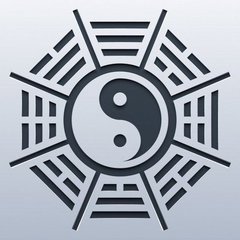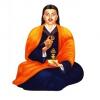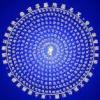Search the Community
Showing results for tags 'dzogchen'.
Found 39 results
-
Anyone know if they're comparable or can be directly related in some way? It seems in Dzogchen there's four levels of rigpa (from rigpawiki below). Ground rigpa: "(Tib. གཞིའི་རིག་པ་, shyi rigpa, Wyl. gzhi'i rig pa) acts as the basis for all of samsara and nirvana, and is identical to the subtle clear light. This is the pristine awareness one experiences at the time of death, but not during the ordinary waking state. It is from this awareness that the foundation consciousness arises." Essential rigpa: "The fundamental innate mind of clear light is considered to be the nature of mind, or the ultimate root of consciousness. In the same way that a sesame seed is entirely permeated by sesame oil, as soon as there is clear and aware consciousness, it is said to be permeated by the clear light rigpa. This aspect of rigpa, this in-dwelling clear light is what is called essential rigpa (Tib. ངོ་བོའི་རིག་པ་ , Wyl. ngo bo'i rig pa).[1] Effulgent rigpa: "The Dzogchen teachings are very precise in talking about rigpa and categorizing it with many subtle distinctions. So a distinction is made between the ground of being and the appearances of that ground, and effulgent rigpa (Tib. རྩལ་གྱི་རིག་པ་ , tsal gyi rigpa, Wyl. rtsal gyi rig pa) is rigpa that is present in the appearances arising from the ground. It’s an aspect of rigpa which is to be identified and experienced only when coarse levels of mind and conceptual thoughts are active. At that point the experience of the fundamental innate mind of clear light has ‘ceased’―‘ceased’ in the sense that it is no longer a direct object of your experience. However, there is still a definite quality of clarity and awareness that permeates the coarser states of consciousness. This type of clear light experienced as a quality that permeates these states is the effulgent rigpa. All-embracing rigpa: rigpa of all-embracing spontaneous presence (Tib. ལྷུན་གྲུབ་སྦུབས་ཀྱི་རིག་པ་, Wyl. lhun grub sbubs kyi rig pa) Do these have equivalents in Daoism, and if so, what would they be? Thanks a lot!
-
Hi friends, a question, with some preface: I started to develop an interest in Dzogchen a little more than a year ago. I'd been doing silent, objectless meditation for some time, and being without any teacher I was starting to worry if I was falling into what Chan masters sometimes refer to as a "cavern with ghosts," i.e. oblivion without illumination. I realized that Dzogchen offered more of a structure than I was able to find in books of Zen, Taoist medication (Golden Flower) or even apophatic prayer (Plotinus, Dionysus, Eckart, etc). Now I don't want to get into a long debate about whether/ to what degree Dzogchen leads to the same thing as the other traditions (I've seen enough of that on DW). Suffice it to say that I'm reasonably confident that it leads to where I want to go, being, according to its own view, not only the essence of Buddhadharma but also the essence of all religion/spiritual traditions. I had and have no interest in going through ngondro or otherwise getting involved in the structures and hierarchies of Tibetan Buddhism. I really just want a "nondual" contemplative practice that is detailed enough to provide decent guidelines for practice, but free from religious dogma. This is why I was happy to find out about ChNNR, who gave webcasts of the Direct Introduction, but didn't require formal "conversion" to Buddhism or samathas other than to maintain the View. And he was reportedly accessible without expecting or desiring "worshippers." Unfortunately, I was not aware of him until after his very last webcasts and before he passed away (sometime in July or August 2018). I'm not aware that the Dzogchen Community has appointed anyone to take on his role, and in any case my feelings towards that organization are somewhat ambivalent. With ChNNR gone, I'm uninclined to get involved with it. So the question is, are there any other Dzogchen (or Mahamudra) teachers who follow a similar perspective to ChNNR in offering DI via webcast and enabling practitioners to just follow the teachings without formal conversion/memberships/vows? Does anyone have recommendations? At this point I'm almost inclined to just get started and throw myself on the mercy of Heaven (as it were) as I feel this is rather holding me back. I would also be interested in hearing about alternative pathways via other traditions that I may have missed (in Taoism, for interest), i.e. accessible nondual meditative traditions or teachers that are not dependent upon taking a confessional perspective, cumbrous rules or arbitrary obedience, but which aim to lead the student to the essence of all traditions. Many thanks I'm advance!
- 36 replies
-
- 3
-

-
- nondual traditions
- mahamudra
-
(and 2 more)
Tagged with:
-
Hello Friends, This is my first post. I wanted to join thedaobums in the hope of possibly making some new friends and contacts, as well as engage in some good discussions about the site's many interesting topics. I've been a "lurker" for a while, and I have found this forum to be the most dynamic, eclectic and diverse of the several that I have belonged to which deal with related topics (dharmawheel and some esoteric forums). Anyway, my background is itself eclectic, and I'm increasingly having a difficult time fitting myself into a label, without, at the same time, being able or desirous of "rejecting" anything that I may have identified with in the past. On the whole, I think this is a good thing, as I see a major goal of the spiritual path as being able to transcend labels and "identities." At the same time, I'm finding it quite uncomfortable. It's like a man having 3 or 4 families which don't know or acknowledge each other, each of whom he loves deeply as "part of himself"; he is unable to live with any of them all the time, but unable to part with any of them in an absolute sense; at the same time, he has a sense that what he is truly seeking lies outside the very category of "family" (if this metaphor makes sense). With this in mind, I'm reluctant to call myself a "Buddhist," or "not a Buddhist," a "Christian," or "not a Christian," a "Taoist," or "not a Taoist," etc. Over the past five years, I've been deeply immersed in the Western Esoteric Tradition, particularly centred around the ideas of Renaissance magi such as Agrippa, Dee, Bruno, the Rosicrucians, as well as Swedenborg, Boehme and the (non-Blavatskian) Western Theosophical tradition, while also finding many limitations in their points of view and needing to supplement this with study of the more metaphysical traditions of the East--Buddhism, Taoism and Trika Shaivism. But then increasingly I can't find what I'm seeking in any one of these traditions to the exclusion of others. I see them all, perhaps, as "upayas": skillful means to lead deluded beings to liberation. Despite all the arguments I have read and participated in over the philosophical subtleties of what precisely this "liberation" entails, I still naturally incline to this general universalistic view. I'm fond of Crowley (again while acknowledging his limitations), and I think that he was on to something (inspired) by his realization that one needed to break through externally imposed labels, restrictions, and identities and discover one's own "Holy Guardian Angel" in order to truly move forward. I think he was mistaken on many levels, but this idea that one needs to, as it were, make one's own tradition (in his case, Thelema) rings true for me, personally. If one doesn't, one is more or less the victim of centuries/millennia of historical and scholastic traditions which may have nothing to do with one's real quest. I know how much he suffered (and made others to suffer) in pursuing this ideal, however. Still, in a sense I consider myself a "independent Thelemite"--"independent" because I do not consider AC's personal revelations, mythos or ideas regarding the different Aeons (interesting as they may be) as binding on anyone other than himself. I think it could be argued that there is a "thelema," properly understood, hidden within each if the world's great religious/spiritual traditions, including Christianity and Islam (vide Corbin). I also disagree with Crowley regarding the importance of compassion and even pity; the Bodhisattva ideal is one of the most noble and glorious conceptions that I am aware of. Practically, I have more and more withdrawn from outward religious rites and turned towards silent, objectless meditation. The other, more active side of my spiritual practice involves Bardonian Hermetics, and a sort of streamlined angelic theurgy. Still, I feel like I've been stagnating for some time and I feel a strong need to break new ground. This is why I have increasingly turned towards the possibilities of astral projection (or "journeying") as a means of contacting higher Wisdom beings to help me move forward. My abilities are still weak at best. In this connection, the recent discovery of Qigong and energy work in general has been a great help. I never talk about this stuff to anyone. The anonymity of this site encourages me to share in the hope of finding like minded fellow-travelers. This is the reason I have written this long and regrettably egotistical post. I am what we might call "esoterically isolated," outwardly living a workaday life with a family, and without any associates beyond two or three distant contacts. I got "burned out" long ago on spiritual organazations and groups, and prefer the way of the hermit, at least until circumstances shift and other possibilities arise (I can't rule it out). Still, I am looking forward to hopefully learning and sharing whatever I can with friends here. Thanks :-)
-
Hey everyone. New one here.
-
It's no secret that the Star Wars mythology, including the Jedi achieving a body of light and their physical bodies disappearing at death, was inspired by the Dzogchen system. So I asked myself if there is a hollywood movie which probably depicts specifically the Dzogchen achievement of The Great Transfer. Below is a scene of a hollywood movie which seems indeed inspired by The Great Transfer. The depicted details include: Imprinting the hand into solid rock, the aggregates of the body been liberated into their essences (therefore spontaneously the appearance of the body taking on every form the practitioner needs it to), visions (incl. bindus), opening of the kati channel (shining of clear light through the pupils), realization of the dharmakaya through sky gazing, direct insight into appearances of the environment etc. Pretty funny!
-
Hi all, 1) There could be many great Dzogchen teachers over the world, and I would like to know their different perspectives on the teachings, and teaching styles. Would you explain the details? 2) At this moment, I can learn the Dzogchen only by online. Is there any good online Dzogchen teachings that I can learn as webcasts or online streaming? I'll be seriously waiting for your replies. Many thanks
-
.
- 49 replies
-
- 5
-

-
- rainbow body
- dzogchen
-
(and 6 more)
Tagged with:
-
If you want to know and "practice" original Dzogchen as it was meant to be presented, please purchase all of Chris's books as displayed on his Amazon page. These are all new first time translations of Dzogchen's most profound and earliest teachings. What you will read is quite shocking and revelatory as the Dzogchen view is brought into clear focus. It cuts to shreds any notion of a "gradual path" or need for practice and effort. Chris has captured the essence in his translations of what Dzogchen was intended to convey; immediate enlightenment and release! May all beings prosper! http://www.amazon.com/Christopher-Wilkinson/e/B00KINMI22
-
.
-

Dzogchen Thogal: a Buddhist creative adaptation of a Daoist technique?
Wells posted a topic in General Discussion
.- 177 replies
-
- 2
-

-
- rainbow body
- thogal
-
(and 2 more)
Tagged with:
-

Great introduction to Bon Dzogchen -John Myrdhin Reynolds
Tibetan_Ice posted a topic in Buddhist Discussion
-
.
-
Greetings everyone, In honor of Chogyal Namkhai Norbu's upcoming retreat on the pranayamas of Yantra Yoga, I want to say something about this marvelous system, which has benefited me a great deal. In contrast to Indian Yoga, where there is an abundance of information on postures and pranayama exercises available, Tibetan pranayama exercises are not given out to the general public, and to a large extent even the systems of systems of yoga postures are secret. One of the exceptions to this secrecy is Yantra Yoga taught by Chogyal Namkhai Norbu. Yantra Yoga is a Sanskritization of Trul Khor, a "yantra" being a series of movements linked with breathing. In the practice, movement is done on inhales and exhales, and breath retention is done holding a posture. Those who have researched Tibetan breathing practices such as tummo have probably seen that they use a type of breath retention called vase breath. But what exactly is vase breath - how does one do it? Getting clarity on this is not easy. This is where Yantra Yoga comes in: in Yantra a proper vase breath is divided into four steps: open hold, directed hold, closed hold, and contracted hold, which in turn are done on the basis of correct inhalation and exhalation. The mechanics of the movements and poses make your body do these elements correctly (provided you are doing practice with awareness). So you get a very precise felt sensation of what a proper quick inhale, slow inhale, quick exhale, slow exhale, open hold, directed hold, closed hold, contracted hold, and empty hold feel like. You then take this knowledge and apply it to your pranayama practice, so there is no doubt that you are doing it correctly. Brilliant! Different holds are trained by different yoga postures. Backbends such as cobra, locust and bow train open hold; twists train directed hold; inversions such as sholderstand and headstand are poses that train closed hold; and downward dog, fish, and frog are poses that train contracted hold (I am using the standard Hatha Yoga names for the poses here, although they are often similar or the same in the Tibetan system). There is more to the system than that such as various preliminary and closing exercises, but training the different holds using postures is the gist of it. There are many books and DVDs available to learn the system. In my case, I went to yoga classes in my area with good lineage (Iyengar and Ashtanga) in order to learn the poses correctly, and then learned the Yantra Yoga way of linking the poses together with breath from the books and DVDs. So that is the physical aspect of the system. It is very good even if you are just interested in Hatha Yoga because you understand what correct breathing is like, rather than just correct physical alignment, and this plus the dynamics of the different holds opens up a deeper understanding of subtle inner alignments. A lot of things about yoga postures make a lot more sense to me having studied this. Now, about pranayama. There are two preliminary pranayamas which are forms of alternate nostril breathing, and then five main pranayamas of which use vase breath in a major way. The first two of these are more physical and the last three incorporate visualizations of channels and chakras. Chogyal Namkhai Norbu is going to be teaching these pranayamas in his next retreat which will be webcasted (!) for free (!!). He typically spends one or two session of every retreat teaching about Dzogchen generally, and then teaches the practices specific to that retreat, with one session at some point explaining and then giving direct introduction (!!!). These pranayamas are not associated with the cycle of a deity like other Tibetan tsa lung systems, but are directly related with Dzogchen. So if you get the direct introduction and oral explanation, you have permission to practice. And he doesn't teach these particular practices very often. What's more, the books that serve as references for the practices he teaches are only available to members of his organization, the one exception being the book on the complete system of Yantra Yoga, which is publicly available. http://www.amazon.com/Yantra-Yoga-Tibetan-Movement/dp/1559393084/ In other words, this retreat, in addition to the publicly available book, is giving unprecedented access to authentic Tibetan pranayamas connected with Dzogchen. The retreat will be June 3-7, from Tenerife, Spain. The official schedule is not up yet, but typically the session are two hours each, with a 10 am morning session and an afternoon session starting a 3 or 4 pm. http://melong.com/events_listing/spain-tenerife-dzamling-gar-june-3-7-2016/ http://webcast.dzogchen.net/
-
.
-
.
-
.
- 3 replies
-
- rainbow body
- dzogchen
-
(and 2 more)
Tagged with:
-
.
-
.
- 106 replies
-
- 2
-

-
- primordial
- spirit
-
(and 6 more)
Tagged with:
-
This is a collection of posts, from Loppon Malcolm, explaining the epistemological advantage of Dzogchen, when revealing the false mind-matter dichotomy. Though this comparison is made between the lower yanas of Buddhism: it can be concluded, without doubt, that this mind-body dichotomy is a prominent feature among Eastern and Western philosophical traditions: Now we are entering the realm of Ati yoga, where we discover that actually the fundamental state of our being is our physical body - our existence as body ~ Dzogchen Ponlop Rinpoche http://www.dharmawheel.net/viewtopic.php?f=39&t=14040&start=200 ...only in Dzogchen teachings is the substance dualism that is a prime feature of Buddhist thought from abhidharma right up the the lower tantras truly overcome in an explicit fashion. http://www.dharmawheel.net/viewtopic.php?f=39&t=14040&start=220 The manner in which the other schools resolved this is through recourse to a species of mentalism i.e. the subtle inner madhyamaka, if you will... No, seriously -- for example, Khyentse Wangchuk declares that there is no difference between mind and matter because everything is established as mind. This is perfectly acceptable thing to say in a Lamdre context. I have seen the same statement [everything is established as mind] coming from Gelugpas when they explain how one is to practice Vajrayāna, as opposed to how the Gelug sutra view is formed and asserted. This is also how the Kagyus phrase things. This is not how Dzogchen deals with the issue at all. Please bear in mind that not everything said by Nyingmapas necessarily reflects the view of Dzogchen. http://www.dharmawheel.net/viewtopic.php?f=48&t=8380&start=0 If you elevate everything to the ultimate level, even "...matter is unconditioned without anything missing", as it says in the Yum Chenmo, the sutra of Perfect Wisdom in 100,000 lines. But the Buddhist scholastics from Sarvastivada up to Dharmakirti have always maintained a hard division between mind and matter, between nāma on the one hand and rūpa on the other. For example, in the account of the twelve links in the Vibhanga, the Pali Abhidharma compendium, when discussing the twelve nidanas, it even leaves off the rūpa in the nidana of nāmarūpa, running ignorance, formations, consciousness, name, etc. The Yogacara school attempts to supercede this dualism through asserting that everything is fundamentally a projection of the mind -- in fact the 15th century Lamdre Master Khyentse Wangchuk states, there is no dualism of mind and matter because everything is mind. As we know, Madhyamaka adopts the conventional truth either according to the Sautrantika system, or the Yogacara system. But since it's own perspective is grounded in the Prajñāpāramitasūtras, it regards distinctions such as mind and matter to be merely conventional designations that do not have any real basis apart from imputation. But we can see that this division is well preserved in Buddhist tantric literature (as well as Hindu tantric literature) when we find for example that the mind is described as a rider of a horse, vāyu. This is because both forms of tantra, Buddhist as well as Hindu, are concerned with the mechanics of the body for understanding how to gain realization through our embodiment through the practice of various kinds of yoga. Granted, this is sometimes is found in Dzogchen literature as well. But when we examine that actual system of Dzogchen according to the ancient Dzogchen tantras, we find that in fact even consciousness itself is generated phsyiologically in the body by a vāyu. I have yet to find in an original Dzogchen tantra the common Buddhist term khams drug, sadadhātu i.e. earth, water, fire, air, space and consciousness. I may yet find it, but at least the Valby KWIC tool does not in fact list it in the 83 or so important Dzogchen tantras that he converted into searchable text files. It also does not list every instance of thod rgal in the Dzogchen tantras as well so its look up routines are not completely infallible. But there are hundreds of references to the five elements ('byung lnga, pañcabhutani). I have been also examining the Mdzod phug lately, Bon "Abhidharma" and cosmology, is largely freed from the constraints of Buddhist conservatism, has very interesting things to say about the five elements and so on, and when is a text clearly influenced by Dzogchen. A kind of Dzogchen Abhidharma. One of the reasons why I started looking into this text is that the Rigpa Rangshar tantra contains a very brief mention of a primordial egg cosmology which accounts for the formation of the world, similar to the Vedas and Bon: Now, to demonstrate the ignorance of the object of delusion: delusion is deluded by the forgoing. The field is prior to the formation of the world; a so called “wish-fulfilling tree” grows, a tree growing from the blessing of the youthful vase body of the buddha, born from warmth and moisture which arose from an egg. The Sahāloka formed from the mind disturbing the so-called self-originated wisdom in that. That is called the ignorance of the field of delusion. http://www.dharmawheel.net/viewtopic.php?f=48&t=7522&hilit=delusion&start=60 A tantra called Uprooting Delusion from the dgongs pa zang thal cycle provides the following description: The way sentient beings arise: that nameless general ground, is non-conceptual and not established at all, invisible and unclear, from which when the bifurcation occurs, since vāyu, vidyā, and space separate, [3/b] the intrinsic sound of the elements produces vibration. From the inside of the darkness of the clear part of appearances, as soon as a storm of fire emerges, scattering everywhere, Vidyā, like the mind of a lunatic, is dazed and reeling. Since vidyā lacks confidence in its own appearances, it panics at sound, is frightened of rays, and through awareness not taking its own place, the ignorance that arises simultaneously with it is called “the causal ignorance. Because of a lack of mindful attention, self and other are grasped as a duality, and both outer and inner dependent origination occur. The whole universe arises through awareness looking externally. All sentient being arise through awareness looking internally. Through looking there, fearful appearances arise, through looking here, ‘self’ arises. Many mistakes arise from the single mistake about the appearances of here and there. Because of being mistaken about a self, there is a mistake about other, attachment to self, aversion to other. From the seed of attachment and aversion, the whole outer universe and inhabitants are mistakes. Because one is held as two, [4/a] that is called the delusion of dualistic grasping. Since one imputed and mistook outer and inner, that is called “the imputing ignorance”. Because of familiarity of subject and object of that, from the thick buildup of traces, there was entrance into the state of samsara. That is how the six migrations occurred.” http://www.dharmawheel.net/viewtopic.php?f=48&t=7522&hilit=delusion&start=80 ...the String of Pearls states: Having been gripped by the apprehender and apprehended in the aggregates, elements and gateways, one remains in samsara itself for a long while, within the belly of the three realms one is placed in the prison of name and matter, [352] bound by the chains of ignorance, covered with dense black darkness of samsara, attached to the spicy taste of passion, one is bound by the noose of confusion, tormented by the hot fire of hatred, one’s head is covered by pride, the gates of jealously are locked, surrounded by the armies of resentment and so on, tied about the neck with the noose of apprehender and apprehended, stuck in the swamp of past traces, one’s hands are shackled with ripened karma, the mother of karma is joined with her child, one following the other just like a water wheel, alternating between good and bad bodies, born in different forms, and through heightening one’s self-grasping one sinks to the bottom of the ocean of suffering, one’s heart is grabbed by the goad of the evil destinies, one binds oneself with the enemy, afflictions. Fire appears as water to hell beings, as hunger and thirst to hungry ghosts, as fog to animals. the aggregates, gateways and elements appears as the five elements to humans, those are also pleasurable, painful and neutral, as weapons and armor to asuras, and as desirable things to gods. For example, just like a rapidly spinning fire wheel one abides continuously in samsara for a long while. Such various appearances are like seeing a snake in a rope since what isn’t there is held to be there, both the outer and inner container and contents form, and if that is investigated, it is a rope, i.e. the container and contents are already empty the ultimate with the form of the relative." The mistake then is seeing as there what isn't there, which is why this tantra, among others uses the rope/snake example. What this tantra is stating is that deluded appearances we see that are predicated in the basis do not exist in the basis and are not appearances of the basis, but rather misapprehensions of the appearance of the basis. http://www.dharmawheel.net/viewtopic.php?f=48&t=7522&p=89967&hilit=delusion#p89967 Sentient beings are deluded about the display of the basis. When they cease to be so deluded, they are buddhas. The basis never displays as anything other than the five lights. Further, The Luminous Space states: That mind is produced out of the dualistic grasping to the six objects of the manifestation of wisdom. How can that [mind] be produced? Since [the mind] is produced from that ignorance that does not recognize the intrinsic manifestation of wisdom [the mind] is produced. Sentient beings, rocks and trees are assembled by delusion about the basis. But the basis only displays one way. It does not display as both samsara and nirvana. Since that critical point of luminous empty vidyā was not recognized, grasping onto that produced the five elements, and the causal thigle [was produced] from the refined part of those. The body was produced from that [refined part] and energy [rtsal] of wisdom produces the five sense gates in that [body]. Within those [sense gates] the five wisdoms are produced. The five [sense gates] grasping onto those [five wisdoms produce] the five afflictions. After first being created by the energy of wisdom; in the middle, it was not recognized that the body of the refined part of the assembled elements actually is the five wisdoms, since this was not realized, through intellectual views, the non-sentient and sentient both appear, but don’t believe it. Here, it is actually five wisdoms to begin with; in the middle, when the body is formed from assembly of the elements through ignorance grasping onto those [five wisdoms] also, it is actually the five wisdoms. The five aggregates, sense organs, and afflictions also are actually the five wisdoms. In the end, since one transcends accepting, rejecting, proofs, and negations since those are realized to not be real. As such, the sign of non-duality is [the body] disappearing into wisdom without any effluents because the critical point of the non-duality or sameness of the non-sentient and the sentient was understood according to the Guru’s intimate instruction. The basis only is the five wisdoms and only displays as the five wisdoms -- the rest is delusion. Ignorance [avidyā] is not a display of the basis, it is delusion about the display of the basis. Knowledge is not a display of the basis, it is the absence of delusion about the display of the basis. One basis, two paths, two results. http://vajracakra.com/viewtopic.php?f=59&t=1203&start=140 According to the sNying thig tradition, at the time of the result the division between animate and inanimate vanishes. The distinction vanishes. The basic view of man ngag sde is that the light, the visible expression of wisdom, is reified into the five elements. When that reification is dissolved, also the perception of a difference between the animate and inanimate dissolves, since the five elements pervade all phenomena including mind/consciousness. Actually, the view of man ngag sde is that even consciousness itself is a product of the five elements. But this is not a problem since the actual nature of the five elements is the five wisdoms. Yes, this is how Dzogchen can give a physicalist account of consciousness while avoiding the charge of being physicalists, i.e., because the appearance of the sentient and the non-sentient arises out of the a misperception of the five lights of the basis. http://www.dharmawheel.net/viewtopic.php?f=48&t=8536&start=40 ...Since the brain is made of five elements, it too is made of the five wisdoms (ye shes) of vidyā. Therefore, there is no problem with awareness, etc., having a basis in the body. Actually, what we say in Dzogchen is that the wisdom of vidyā is located in the heart, the energy of vidyā is located in the brain, where it governs sense organs and cognitions. Wisdom has no origin, it formed naturally. Hence the metaphor of the peacock feather. The elements form from the non-recognition of of the five lights of connected with the five wisdoms. The Khandro Nyinthig states: Since that mind arose as automatic manifestation of six mental apprehenders, the five elements are produced. Since those are not recognized as the five wisdoms, the five elements assemble in dependence upon grasping those [five wisdoms]. Since those assemble, the body forms through the action of one [element] assisting the other. With that forms the apprehended and the apprehender. And: As such, that basis, the natural reality of things, the great intrinsic energy of wisdom, the dharmakāya, was not recognized, and because of the stains of grasping to it, the elements assemble; the body forms from them, and based on that [body], one wanders in samsara until one ages and dies. And: Since the five energies of wisdom are unceasing, the body forms from the five elements. Since two kāyas are integrated with the relative elements, that previous understanding of the intrinsic energy of wisdom is totally forgotten. The ultimate four elements is the dharmakāya, the relative four elements is the sambogakāya. Nirmanakāya is the lack of sameness and difference of the two kāyas. And: To sum it all up, ignorant attachment to dualistic appearances assembles the energy of wisdom into the elements, and forms the body in actuality. And: Energy is produced unceasingly from that wisdom. Since that energy was not recognized, that apparent and natureless radiant luminosity of wisdom arose as the empty luminosity of the five lights. [430] Within that, since this thinker of thoughts grasps the unceasing energy of wisdom, and since that five colored energy is assembled as the elements, therefore, the body, flesh, blood, warmth, breath, channels and so on are formed from that energy of wisdom. For as long as the mind and the body do not separate, the channels, vāyus, bindus, wisdoms and so on are inseparable. Since that is not recognized as such and the one is grasped as many, like the nameless becoming named, since the five wisdoms, the five afflictions, and so on are divisions in one thing, also those wishing for Buddhahood have aggregates, without contacting the meaning of this even slightly. With this everything is recognized as coming from the energy of wisdom. Since inseparability is recognized, therefore the defiled also comes from the energy of wisdom. Also that self-liberated from the mind, and as the defiled does not appear, Buddhahood is attained in the expanse of wisdom. Therefore, it is inseparable. Others hold them as different, and respond with practice. And: ... after the body formed because the energy of initial vidyā was not recognized as wisdom, there is delusion because of the grasping of materiality, and wandering in samsara. And: The relative material bindu is the intrinsic radiance of those five wisdoms of the originally pure dharmadhātu externally manifesting as five lights, after which, the elements are produced upon the mere traces of grasping of the mind. Further, the natural reality of that mind (that established in anyway) is space. Whether that is like this or not, the energy of that vivid luminosity arising as the diversity, that is called “vāyu”, it is called “mind”. Though luminosity is called mind, because of movement, it is called “vāyu”. When examined, it is not established in anyway. Also luminosity is not established, also movement is not established, also inseparability is not established. Since that is not recognized, since that energy that grasps so called “vāyu” produces heat, there is fire. For example, just as when sweat and heat is produced when a person does hard work, [fire] is produced from that grasping onto heat. When the heat of fire touches the ground, water is produced in the form of vapor. Since grasping onto that energy of wisdom arose, the outer five elements are produced, caused one by one. The five elements form matter. Since grasping onto that arose, the five elements assemble, and the body forms through the condition of the five refined parts of those [elements], one by one. If it is asked why, now then to begin with, the energy of wisdom is vāyu, from that is heat; from that, earth; from that, water: since each assists another, the body develops more i.e. the body actually forms out of the refined part of the five elements. That [body] is pervaded by the refined part of the five elements. The refined parts and that energy of wisdom are given the name “channels, vāyus, and bindu”. The energy of wisdom is the five elements. Since wisdom is present in them, there are five wisdoms. That is given the name material bindu. Wisdom is inseparably present within that material bindu. And: Further, to begin with, the body is formed by ignorance of the wisdom of basis. The nature of wisdom in that body is the refined part of the five elements, present in the material bindu as the play of the kāyas and wisdoms. Since their luminous radiance arose as light, it is given the name “three wisdoms”. And: Though the body is formed form ignorance of the basis, as soon as that is recognized, it is not beyond wisdom in the beginning, the end and in the middle. Etc. this text just goes on and on in the same vein. http://www.dharmawheel.net/viewtopic.php?f=39&t=14040&start=240 While there are of course Dzogchen texts that describe mind and body as separate, in general, the innermost secret cycle holds that the perception that there is a difference between the animate and inanimate is a mistaken one. In the state of ultimate liberation [i.e. samyaksambuddhahood], the distinction between animate and inanimate disappears because it is not true. Further, like other Vajrayāna traditions, Dzogchen provides a physical account for the process of rebirth for example in the Vajramala Tantra: it is proposed that the alayavijñāna, which is inseparable with the mahāprāṇavāyu, is responsible for transmigration; for the appropriation of a new series of aggregates. But Dzogchen goes a step further and explicitly identifies consciousness as the operation of a vāyu in the body. Vāyus of course are the function of the refined element of air inside the human body. http://www.dharmawheel.net/viewtopic.php?f=39&t=14040&start=280 - The point is that in Dzogchen teachings mind and matter are not treated as different substances as they are in other Buddhist systems. They are equally treated as producers of the five elements. The way in which Dzogchen avoids the charge of being "physicalist" is that the five elements themselves arise from misperception of the nature of the basis [more or less emptiness endowed with light], without needing the intermediate step of proposing everything is an appearance of mind and so on. And of course the awareness that misperceives the basis arises out of a vāyu that stirs in the basis, and so on. It gets a little complex.... ...basically the point being underscored is that matter and intelligence are non-dual. For example, it is a special tenet of Dzogchen that even the formless realms are material, i.e., that basically, wherever there is matter, there is consciousness, wherever there is consciousness, there is matter. You can either say that matter is intrinsically conscious or that consciousness is intrinsically embodied. Either way it amounts to the same thing. "Sentient" and "non-sentient" are merely conventional designations based on appearances generated by ignorance.... No, not photons, not physical light in the western scientific sense of the term. Precisely, the basis is ye shes. Empty luminous energetic ye shes which appears to a neutral awareness (which itself rises out of the basis when a vāyu in the basis stirs). http://www.dharmawheel.net/viewtopic.php?f=48&t=6842&start=0 The basis is called the basis because it has not been realized. At present the basis is not latent, like it is between eons. At present the basis is in a state of manifestation as Buddhas and sentient beings. When the basis is latent, we term it "the time of the basis" or "the bardo of samsara and nirvana". After the basis manifests we term this phase "samsara and nirvana turn their backs to one another". When we fully realize the path of dzogchen, it is called "the universe manifests as the basis": in other words, our total experience will be the three wisdoms subsumed under the name, great original purity. The basis itself has not changed in anyway during these three time periods. When the latent awareness (shes pa bag la nyal] of the basis recognizes the basis as its own display, it becomes prajñā [shes rab] and realizes buddhahood as Samantabhadra. When the latent awareness of the basis does not recognize itself, under the power of the imputing ignorance that imputs appearances as other and that awarness as a self, it becomes consciousness [rnam par shes pa]. The 'latent awareness of the basis' is an aggregate name for all those beings who have not acheived total buddhahood in the previous eon, but acheived a so called "buddhahood that reverts to the cause", [as I have explained now several times within the last few weeks] in the same way that we refer to the aggregated consciousnesses of all sentient beings as the vijñānadhātu, along with dhātus of earth, water, air, fire and space, the so called sadadhātu, the six dhātus. It is part of the rtsal of the basis.... The basis is not one thing, it is not many. It is the dharmadhātu... ...This is basically how it is -- but since there is no individuating consciousnesses driven by affliction, the awareness latent in the basis is not discussed in plural terms, that is until there are individuating consciousnesses when samasara and nirvana "turn their back to each other". Oh, this comes about because of traces of action and ignorance. Nothing in the basis changes, of course, what happens is that there is sort of cosmic pulsation of ignorance and its subsidance which results in the appearance and disappearance of samsara and nirvana; and as we know, traces can accumulate in wisdom. You have to understand that all of this explanation of cosmic cycles is really intended to be brought down to the level of the individual's life cycle in terms of the four bardos: The bardo of death == destruction of the universe up to the two higher form realms The bardo of dharmatā == the arising of the sound, light and rays of the basis The bardo of becoming == non-recognition of the basis The natural bardo of this life == the appearance of samsara and nirvana It is an explanation for practice. http://www.dharmawheel.net/viewtopic.php?f=39&t=14040&start=300 - Correct, the aspect of the basis called compassion is the energy of the display of the universe and all its beings.... Real "pure" view means seeing universe and beings arising as the basis. The "pure" view in Vajrayāna is merely a conceptual construction which itself needs to be remedied with the completion stage. Dzogchen skips the two stages.... There are two bases, the original general basis and the basis of the person. http://www.dharmawheel.net/viewtopic.php?f=39&t=14040&start=320 A mind or an awareness [shes pa] has a "choice" recognition or non-recognition. The recognizing mind is called vidyā or prajñā. The non-recognizing mind is called avidyā. There are two kinds of Buddhahood in Dzogchen, abhisambodhi, which has a non-abiding nirvana; samyaksambodhi which enters nirvana without remainder. Omniscience arises because the capacity for omniscience is present in the form of potential in the basis. http://www.dharmawheel.net/viewtopic.php?f=48&t=8536&start=20 When one has eliminated the traces of affliction and action in one's own five elements, one's body reverts to its original state as five lights, hence "The body of light". http://http://www.dharmawheel.net/viewtopic.php?f=48&t=15183&start=20 The theory of the body of light is predicted on the fundamental state of reality being something called wisdom, which has five lights, which are reified as physical matter. Upon completion of the path, one sees this matter in its real nature once again and the elements of the body "revert" to their original nature as wisdom (i.e. through the process of thogal one eradicates all the afflictive obscurations which prevent one from seeing things just as they are (yathabhutaṃ)); Body of light is a realization.... It's only necessary, to understand the difference between the use of 'alaya' in Mahamudra and Dzogchen, in this way: http://dharmawheel.net/viewtopic.php?f=102&t=9082&start=40 In Mahāmudra and Lamdre, ālaya refers to the nature of the mind i.e. inseperable clarity and emptiness [of one's mind]. In Dzogchen ālaya refers to ignorance... If anyone's interested in understanding tathagatagarbha/alayavijnana according to sutrayana and vajrayana here's some links in no particular order: http://www.vajracakra.com/viewtopic.php?f=27&t=688 http://www.dharmawheel.net/viewtopic.php? f=102&t=6823&p=84637&hilit=alayavijnana%3Bchandrakirti#p84637 http://www.dharmawheel.net/viewtopic.php?f=102&t=6731&start=120 http://www.dharmawheel.net/viewtopic.php?f=39&t=4056 http://www.dharmawheel.net/viewtopic.php?f=51&t=5219 http://www.scribd.com/doc/99264798/A-Comparison-of-%C4%80laya-Vijn%C4%81na-in-Yog%C4%81c%C4%81ra-and-Dzogchen - comparison of alayavijnana in Yogacara and Dzogchen
-
.
-
.
- 9 replies
-
- 4
-

-
- rainbow body
- dzogchen
-
(and 3 more)
Tagged with:
-
.
- 14 replies
-
- 3
-

-
- rainbow body
- dzogchen
- (and 4 more)
-

Why do only very few Dzogchen practitioners attain rainbow body?
Wells posted a topic in Buddhist Discussion
. -
Can this be accomplished in a 10-15 year thogal retreat ? I was thinking how would it be and what would it mean to prepare for the next 2 or 3 years for such a retreat . Ideally one would have to be very sorted physically and have a very strong understanding and confidence.









